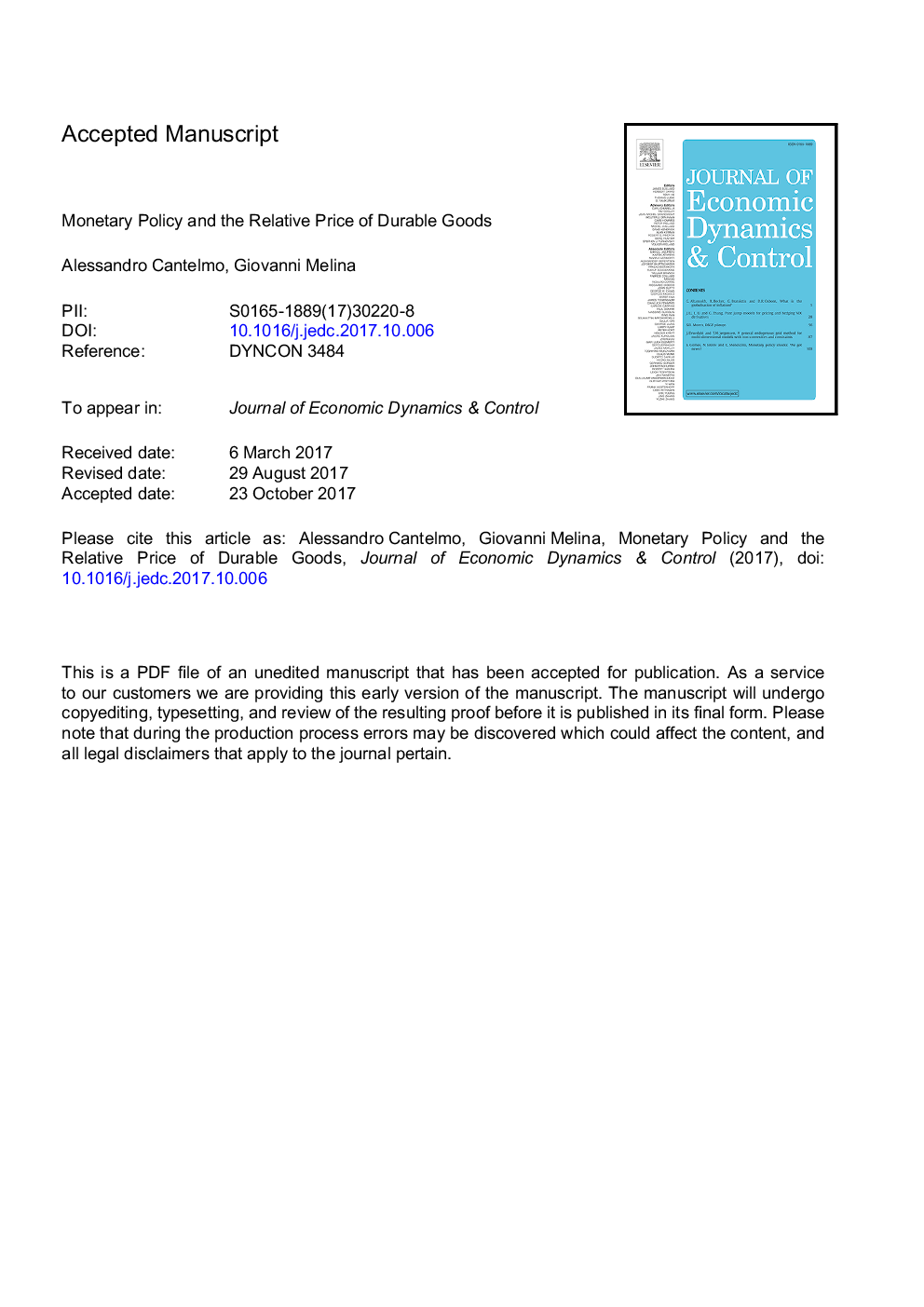| Article ID | Journal | Published Year | Pages | File Type |
|---|---|---|---|---|
| 7358895 | Journal of Economic Dynamics and Control | 2018 | 77 Pages |
Abstract
In a Structural Vector-Autoregressive model of the US, the response of the relative price of durables to a monetary policy contraction is either flat or mildly positive. It significantly falls only if narrowly defined as the ratio between new-house and nondurables prices. These findings are rationalized via the estimation of two-sector New-Keynesian (NK) models. Durables prices are estimated to be as sticky as those of nondurables, leading to a flat relative price response to a monetary policy shock. Conversely, house prices are estimated to be almost flexible. Such results survive several robustness checks and a three-sector extension of the NK model. These findings have implications for building NK models with durable and nondurable goods, and for the conduct of monetary policy.
Related Topics
Physical Sciences and Engineering
Mathematics
Control and Optimization
Authors
Alessandro Cantelmo, Giovanni Melina,
